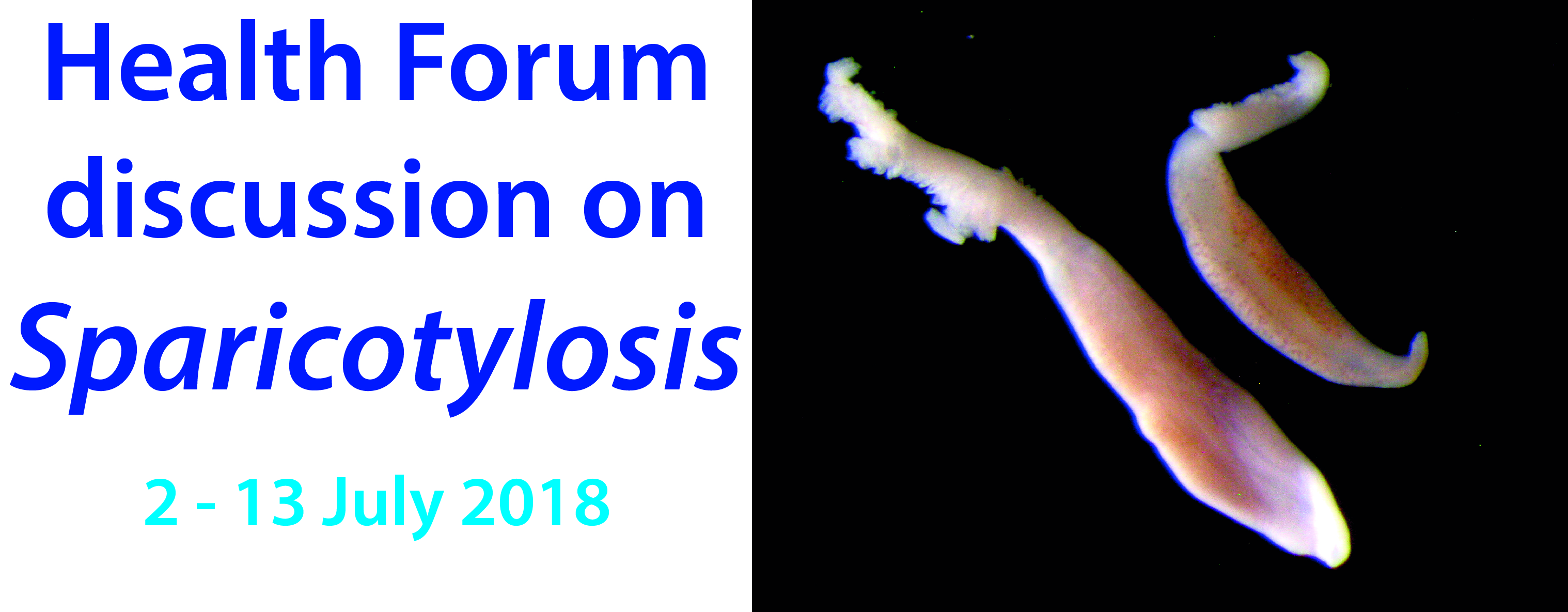Dates: 2-13 July 2018
Forum coordinator: Dr. Snježana Zrnčić, HVI. Zagreb, Croatia.
Discussion moderator: Dr. Ivona Mladineo, ZOR, Split. Croatia.
The discussion on Sparicotylosis is the first topic addressed by the MedAID Health Forum, which is conceived as a platform that will gather field diagnosticians, laboratories, relevant authorities in charge of disease management in the Mediterranean mariculture and other stakeholders
This parasitosis is caused by the relatively large monogenean – Sparicotyle (syn. Microcotyle) chrysophrii that can be observed by naked eye. Although once considered as a specialist monogenean species that infects exclusively the gilthead sea bream, today we know that it parasitises also other wild sparids (bogue, pickerel) present at the farm sites. Nevertheless, it is still known as the most pathogenic ectoparasite for the aquaculture gilthead sea bream. It induces mortalities in the farmed fish, but as well it increases food conversion ratio and decreases sea bream growth rate, making the economic feasibility of the facility problematic. Signs of the disease show changes in the gills: lamellar shortening, clubbing, and synechiae (sticking to each other), proliferation (thickening) of the epithelial tissue with resulting fusion of the secondary lamellae. Gill lesions include anaemic or yellowish gills, gill arches with missing areas of gills, lamellae fusion and sloughing of epithelial cells, as well as a general anaemia in the fish. The monogenean is frequently found in co-infection with other parasites (monogeneans, crustaceans) or bacteria. High parasite prevalence is especially observed in sea cages, but data differ greatly depending on the surveyed geographical area. Because parasite infection in sea cages is more difficult to control compared to other types of facilities and given a limited use and efficacy of chemicals and drugs for treatment, formalin baths are still routinely practiced when the number of parasites in the gills increases. Sparicotyle transfer from the wild sparids to the farmed fish, or vice versa is still debated, but there are clues that a small part is indeed propagated this way. Supplemented diets are also in use in combination with the formalin bath to control early-stage infection and spreading of the disease.
To know more about the Sparicotylosis you can read in our blog the minireview written by Ivona Mladineo here.
1. Objectives of the Sparicotylosis discussion
• To exchange the recent scientific data of a practical implication, with the health experts dealing with the problem of sparicotylosis in the sea bream
• To share “tips and tricks” on sparicotylosis of farmers from one area to help farmers in other areas
• To make an improvement in the preventative and therapeutical approach in solving this devastating issue
2. Process proposed to focus the discussion
The health farm experts are encouraged to share their valuable practical knowledge; the current prevention and treatment methods should be profoundly evaluated and analysed
3. The topics that should be discussed
• Epidemiology
• Susceptibility
• Good aquaculture practices in prevention of infection
• Therapeutic treatment
• Farm health experts’ expectations: how and where they would like to see scientists studying sparicotylosis?

Forum coordinator



Your website is very informative regarding health issues. I was taking a lot of wrong things in my diet, I will overcome that things in future.